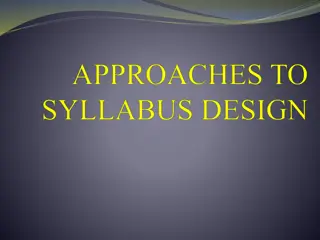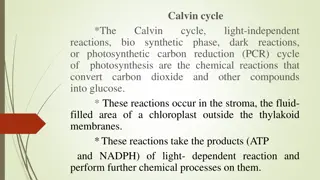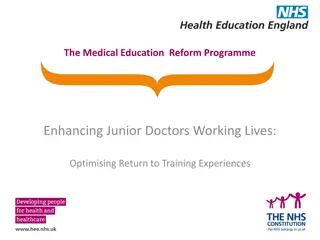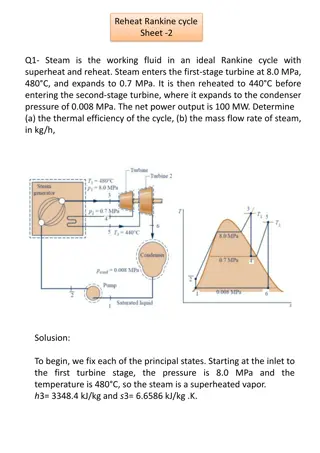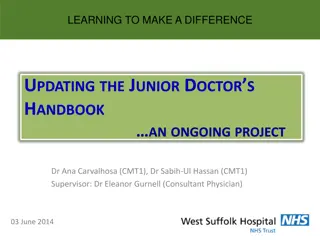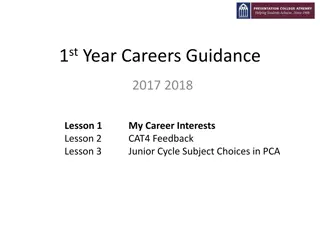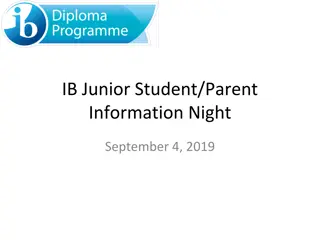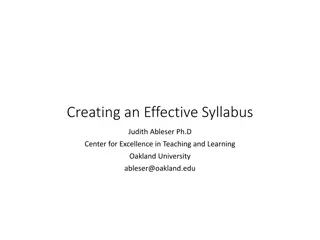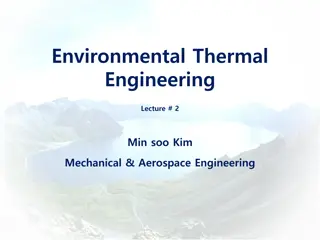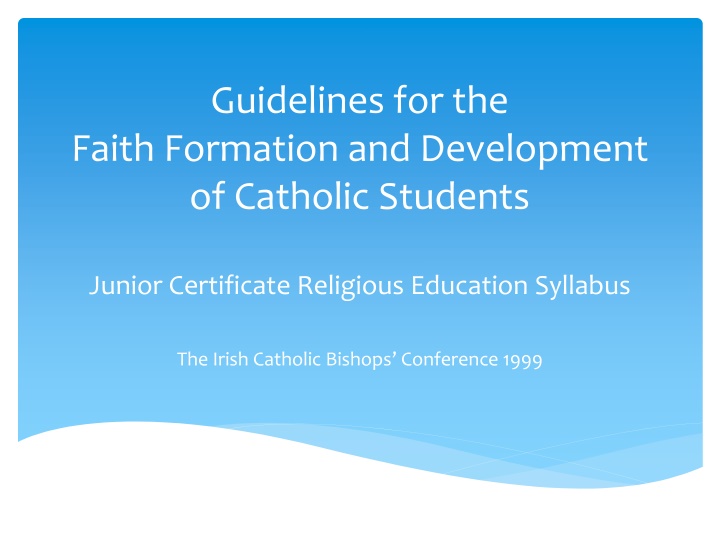
Catholic Students' Faith Formation Guidelines & Syllabus Insights
Explore the insights from the 1999 Irish Catholic Bishops Conference on faith formation for Catholic students, emphasizing the changing context, educational aims, and the collaborative role of home, school, and parish. Delve into the purpose of the document, religious dimensions of education, certification, assessment, and the importance of professional qualifications for teachers of Religion.
Download Presentation

Please find below an Image/Link to download the presentation.
The content on the website is provided AS IS for your information and personal use only. It may not be sold, licensed, or shared on other websites without obtaining consent from the author. If you encounter any issues during the download, it is possible that the publisher has removed the file from their server.
You are allowed to download the files provided on this website for personal or commercial use, subject to the condition that they are used lawfully. All files are the property of their respective owners.
The content on the website is provided AS IS for your information and personal use only. It may not be sold, licensed, or shared on other websites without obtaining consent from the author.
E N D
Presentation Transcript
Guidelines for the Faith Formation and Development of Catholic Students Junior Certificate Religious Education Syllabus The Irish Catholic Bishops Conference 1999
Page 5: Introduction The purpose of the document outlined: Paragraph 2 (P2) In the Ireland of today context for R.E. has changed economic, development of I.T., globalisation of culture, etc P3 The educational aims of the syllabus (among others) moral, spiritual, religious values should form part of the educational experience of every young person Publication of the Syllabus recognises the dedication, professionalism and ongoing commitment of teachers of R.E. in Post-Primary schools P4 highlights the need for Home, School and Parish to work together in support of the young person s faith journey
Page 6: Purpose of Document The purpose of the document is outlined in bullet point form Note the point: to deepen their sense of belonging to the Church; to participate more fully in the Church s liturgy and life, prayer, worship and retreats.
Page 7: Religious Dimensions of Education P1: Catholic Education begins and is nurtured in the home, it is taught and fostered by the school and it lives and matures through the parish P4: Catechetical method should be considered within the context of three criteria: a) Fidelity to the Word of God b) Fidelity to the teaching of the Church c) Fidelity to the person being taught Method of teaching should be student-centred.
Page 9: Certification & Assessment P1: Knowledge, understanding, skills and attitudes are assessed without prejudice to their personal faith
Page 9: Professional Qualifications & In-Service Education Religion is a specialised subject The teaching of Religion is not a soft option Teachers of Religion should be people with a faith commitment and a recognised professional qualification to do the work competently
Page 10: National Education Convention Secretariat Report regarded as desirable that teachers should, as far as possible, have their teaching subjects to degree level It would be unwise to allow a situation to develop whereby a significant portion of subject teaching was being taught by non- specialists P3: It should be the aim of all management, responsible for the education of Catholic students, to phase out the practice of using non-formally qualified personnel whenever the first opportunity arises.
Page 10: Texts, Resources & Time-tabling P1: Texts and resources should be student-friendly. Due care should be given to the reading age, academic abilities and differing needs of students P2: The document reminds readers of Religion being allocated a minimum of two hours per week stating that it is not acceptable, for any reason, that this requirement be reduced in schools where the education of Catholic students takes place
Page 11: The School Environment This paragraph describes a true understanding of a Catholic School/Catholic Ethos
Page 11: Pastoral Care, the Chaplain, the Liturgical Year Under this subtitle P1: Schools Pastoral Care systems explained P2: Role of Chaplain is outlined, however it does not mention that the Chaplain is not always a member of a school s staff P3: The need/function for good liturgical practices in the school community is highlighted
Page 12: Death and Bereavement Emphasises the need for faith practices to be involved in good pastoral care/critical incident policies
Page 12: Parents & Guardians, School/Home/Parish Links This section is aspirational and what all involved in school life ought to strive for. Channels of communication should be open between the school, home and parish When this community comes together, it celebrates the mystery of God in Jesus Christ, it reflects on the complexities of its life as a community and lives the experience of Christ s Paschal Mystery
Page 13: Social Justice for the Reign of God *Theme was mentioned in R of SERVE for CSW 2015 Catechesis is about leading students to seeing the value of giving practical assistance and shaping their own lifestyles so that justice will prevail Social Justice is a popular topic for R.E. teachers, however
See Page 15 Section A: Communities of Faith Section B: Foundations of Religion Christianity Section C: Foundations of Religion - Major World Religions Section D: The Question of Faith Section E: The Celebration of Faith Section F: The Moral Challenge Faith Dimension does this not apply to all aspects of the Junior Cycle Syllabus?
Page 17 This page is helpful in noting what is essential to cover for examination purposes Page 21 See Section B: the final point mentioned here is not really dealt with by any of the textbooks at Junior Cycle Page 22 & 23 These pages are a helpful reference when we encounter instances where Section C is being taught without any faith context/lense
Further observations Looking at Section D & E (Pg 24 27); these are in many ways, the two strongest sections to validate the need for passionate, qualified teachers. The content outlined for both sections highlights how the R.E. teacher plays a vital role in forming the faith of our young people. Section F (Pg 28 & 29) is where teachers have the greatest opportunity to involve the wider community, broadening students learning experience. The faith formation dimensions listed here, should be the starting point/context in which all social projects are introduced.
Page 31 - 32: The Journal The points listed on Page 32 are helpful to note when highlighting how this task for the state examination can be a faith enriching experience for students.





